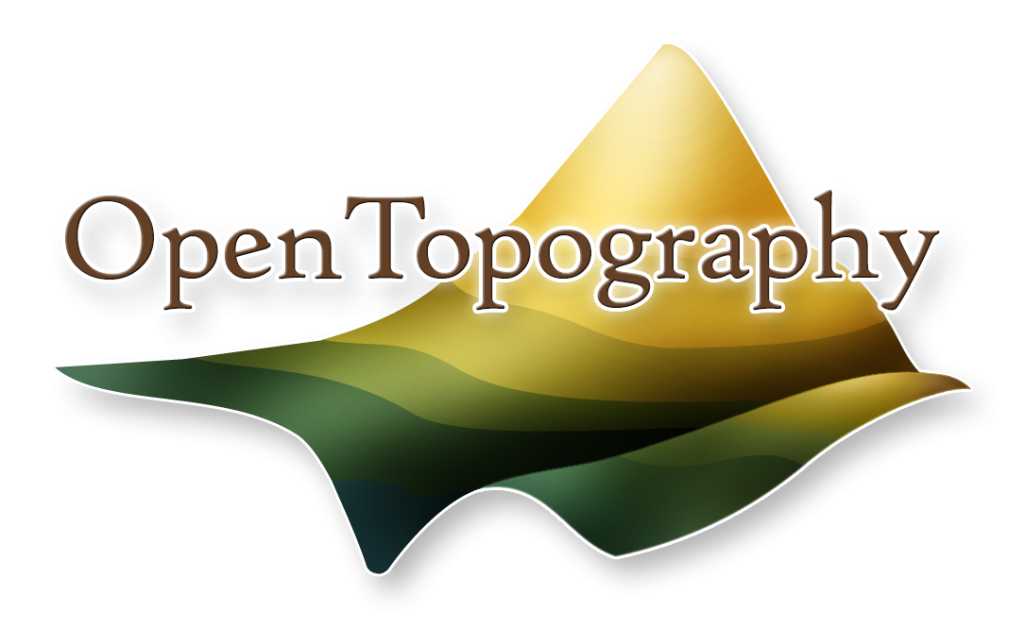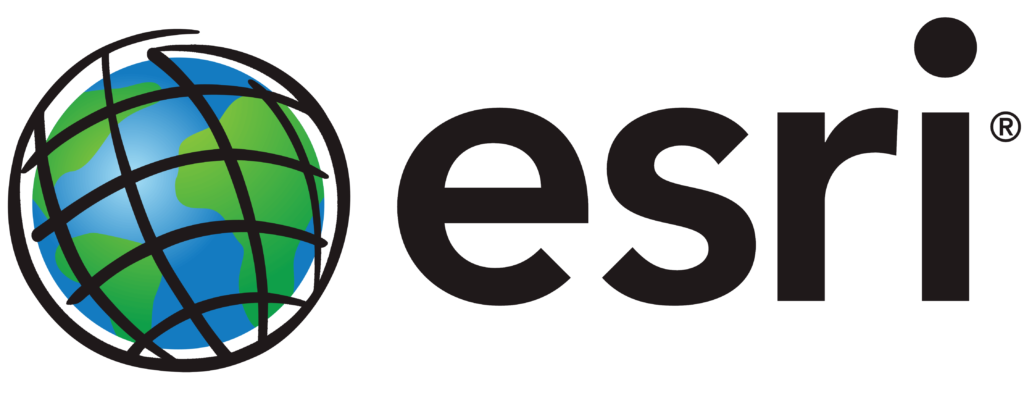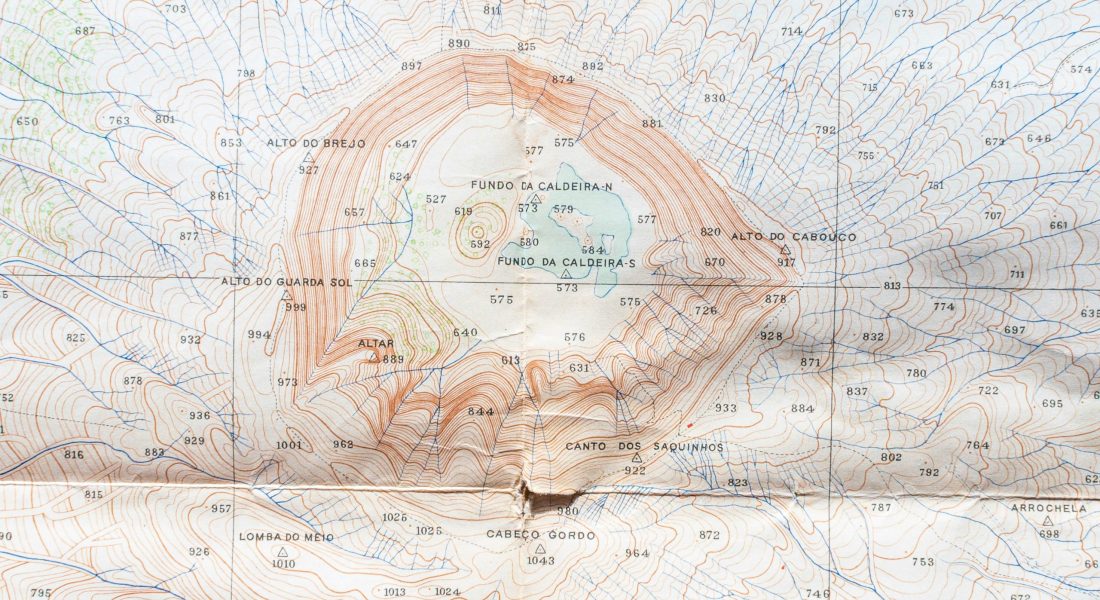Topography is the quiet backbone of spatial intelligence. Mapping landforms, gradients, and surface changes used to take weeks of manual work – now it can happen in minutes. With modern topographic analysis tools, we read elevation, slope, and contour data in ways that are both visual and computationally precise. These platforms bring automation to tasks that once depended on slow interpretation, using AI and geospatial modeling to detect features, generate elevation models, and track terrain evolution over time. It’s not just about maps anymore – it’s about understanding the surface in motion.

1. FlyPix AI
FlyPix AI works with satellite, aerial, and drone imagery to automate the detection, segmentation, and classification of ground features. We focus on transforming how surface and terrain data are analyzed at scale. Our platform brings together AI-driven topographic analysis tools and geospatial data to identify elevation patterns, monitor land-use change, and support terrain mapping with consistent precision. Instead of relying on manual annotation, our system processes complex imagery within seconds, helping users interpret contours and structures across varied landscapes.
Through our GeoAI platform, we enable users to train models, process spatial imagery, and extract information related to slope, elevation, and terrain variation without programming knowledge. The goal is to simplify analytical workflows for industries that depend on accurate topographic insight, from construction and mining to agriculture and environmental management. By combining automation and customizable AI models, FlyPix AI supports terrain analysis that adapts to diverse spatial requirements and datasets.
Key Highlights:
- Integration of AI-based tools for automated terrain and object detection.
- No-code environment for topographic and geospatial data analysis.
- Compatibility with satellite, drone, and aerial imagery.
- Customizable model training for terrain-specific features.
- Scalable processing that supports large-area analysis.
Services:
- AI-powered topographic and surface analysis.
- Custom model development for landform and object classification.
- Data sourcing and integration from satellite or drone providers.
- Geospatial project setup, including segmentation and monitoring.
- Support for multi-sensor workflows using LiDAR, SAR, and optical data.
Contact information:
- Website: flypix.ai
- Email: info@flypix.ai
- LinkedIn: www.linkedin.com/company/flypix-ai
- Address: Robert-Bosch-Str. 7, 64293 Darmstadt, Germany
- Phone: +49 6151 2776497

2. OpenTopography
OpenTopography provides a platform that combines access to high-resolution elevation data with a wide set of analytical and visualization tools. The system supports users in generating and processing digital elevation models (DEMs) that form the foundation of most topographic analysis work. Through algorithms such as TIN-based interpolation and local gridding, OpenTopography enables the creation of precise terrain models that capture subtle variations in surface form. These models are key for analyzing slope, drainage, and other landform characteristics across complex terrain.
Beyond data generation, OpenTopography includes tools for derivative modeling and visualization that help interpret surface structure in more intuitive ways. Users can produce hillshade maps, slope grids, and hydrologic terrain analyses directly within the platform. The integration of 3D point cloud visualization adds another layer of spatial context, allowing users to interact with data rather than only viewing static maps. These tools collectively support research, planning, and environmental work where accurate terrain modeling and topographic analysis tools play a central role.
Key Highlights:
- Platform focused on high-resolution elevation and terrain modeling.
- TIN and local gridding algorithms for DEM generation.
- Built-in support for slope, hillshade, and hydrologic analysis.
- Web-based 3D point cloud visualization for better spatial interpretation.
- Open-source integration with PDAL, TauDEM, and GRASS GIS.
Services:
- DEM creation using TIN and gridding methods.
- Terrain derivative production such as slope and hillshade maps.
- Hydrologic terrain analysis through TauDEM integration.
- Solar irradiation modeling based on elevation surfaces.
- Interactive 3D visualization of point cloud and raster data.
Contact information:
- Website: opentopography.org
- E-mail: info@opentopography.org
- Facebook: www.facebook.com/OpenTopography
- LinkedIn: www.linkedin.com/company/opentopography
- Instagram: www.instagram.com/opentopography
- Address: 9500 Gilman Drive, La Jolla, CA 92093-0505

3. NV5 Geospatial Software
NV5 Geospatial Software provides a suite of tools within the ENVI platform designed to process and analyze elevation and terrain data. The company’s topographic analysis tools focus on transforming vector or point-based data into raster digital elevation models (DEMs) that can be used for further modeling, visualization, or terrain interpretation. ENVI supports surface extraction, contour generation, and hydrologic modeling, allowing users to better understand variations in elevation and surface structure across large or complex landscapes. Each function is built to streamline the workflow between raw spatial data and measurable terrain outputs.
The ENVI environment also includes visualization options such as 3D SurfaceView and topographic shading, making it easier to interpret slopes, shadows, and relief. These capabilities help users working in areas such as landform analysis, watershed mapping, and environmental planning. By combining analytical tools with clear visual feedback, NV5 Geospatial Software supports a workflow where terrain modeling and surface measurement are tightly connected. The tools act as practical components in the broader process of topographic analysis and geospatial understanding.
Key Highlights:
- Integrated suite of terrain and elevation analysis tools in ENVI.
- Support for creating raster DEMs from vector and point data.
- Functions for contour generation, slope modeling, and 3D visualization.
- Built-in correction options for bad DEM values.
- Compatible with hydrologic and solar modeling workflows.
Services:
- DEM extraction and terrain model generation.
- Topographic feature identification and contour creation.
- Interactive viewshed and shading analysis.
- Rasterization of vector and point elevation data.
- 3D surface visualization for terrain interpretation.
Contact information:
- Website: www.nv5geospatialsoftware.com
- E-mail: geospatialinfo@NV5.com
- Facebook: www.facebook.com/NV5GeospatialSoftware
- Twitter: x.com/GeoByENVI
- LinkedIn: www.linkedin.com/company/nv5geospatialsoftware
- Instagram: www.instagram.com/geobyenvi
- Address: 385 Interlocken Crescent, Suite 300, Broomfield, CO 80021, United States of America
- Phone: +1 (303) 786-9900

4. point electronic GmbH
point electronic GmbH develops systems that enable live and calibrated surface height measurements in scanning electron microscopy (SEM) and focused ion beam SEM (FIB-SEM) environments. The company’s BSE Topography solution adds a third dimension to standard imaging workflows, allowing researchers to measure, visualize, and interpret variations in surface height and structure. Through a combination of detectors, controllers, and software, the system reconstructs 3D surfaces directly from backscattered electron signals. This makes it possible to analyze geometric features and surface morphology with real-time feedback, an essential function in topographic analysis.
The topographic analysis tools offered by point electronic GmbH work across different microscope platforms and can integrate into multivendor setups. The software allows for calibrated 3D visualization, automated workflows, and in-situ measurement series that support ongoing experiments. Applications include correlative microscopy, height mapping, and texture reconstruction, helping users connect electrical or structural data with surface geometry. In essence, the system turns topography into quantifiable data that can be examined both live and offline.
Key Highlights:
- BSE Topography system for real-time surface height measurement in SEM and FIB-SEM.
- Combination of hardware and software for calibrated 3D visualization.
- Automated 3D calibration ensuring consistent measurement scales.
- Compatibility with standard microscopy setups and multivendor systems.
- Integration of correlative microscopy and automated 3D workflows.
Services:
- Supply of BSE Topography detectors and scan controllers.
- Development of calibrated 3D measurement and visualization software.
- Support for SEM modernization and system integration.
- Tools for automated height analysis and in-situ topographic monitoring.
- Workflow customization for 3D terrain and morphology analysis.
Contact information:
- Website: www.pointelectronic.de
- E-mail: info@pointelectronic.de
- LinkedIn: www.linkedin.com/company/pointelectronic-gmbh
- Address: Erich-Neuß-Weg 15, 06120 Halle (Saale), Germany
- Phone: +49 345 1201190

5. Esri
Esri provides ArcGIS Pro, a geospatial platform used for mapping, spatial analysis, and terrain modeling. Within ArcGIS Pro, a set of topographic analysis tools allows users to work with elevation data, create digital surface models, and generate features such as contours, spot heights, and slope maps. The platform’s structure is modular, covering everything from data management to 3D visualization, making it possible to analyze landscapes at various scales. The integration of raster analysis, spatial statistics, and geostatistical modeling gives users a comprehensive set of options for exploring surface geometry and terrain relationships.
The Topographic Production toolbox in ArcGIS Pro is specifically designed for creating, refining, and validating topographic products. It supports workflows such as contour generation, elevation band creation, and topographic data generalization. These capabilities are often applied in mapping, hydrology, and environmental studies, where accurate representation of surface form is essential. Through its mix of analytical tools and automation features, Esri provides a structure where topographic analysis becomes part of broader spatial modeling and data visualization tasks.
Key Highlights:
- Integrated tools for generating and refining topographic data.
- Support for contour, spot height, and elevation band creation.
- Built-in functionality for 3D terrain visualization and raster analysis.
- Workflow automation through the Topographic Production toolbox.
- Compatibility with geostatistical and GeoAI-based spatial modeling.
Services:
- Topographic data preparation and contour generation.
- Terrain analysis using raster and vector inputs.
- Digital surface and elevation model creation.
- Visualization and refinement of elevation-based map features.
- Training resources and documentation for topographic workflows.
Contact information:
- Website: www.esri.com
- E-mail: accounts@esri.com
- Facebook: www.facebook.com/esrigis
- Twitter: x.com/Esri
- LinkedIn: www.linkedin.com/company/esri
- Instagram: www.instagram.com/esrigram
- Address: 4, A. Petrytskoho Str., Kyiv
- Phone: +380445024121

6. Digital Surf
Digital Surf provides a unified software platform for topographic analysis and surface metrology. The Mountains® platform serves as a central environment where data from different instruments—such as profilometers, scanning electron microscopes, and scanning probe microscopes—can be processed and compared. The platform focuses on 3D visualization, quantitative measurement, and the extraction of surface parameters that define texture and geometry. By combining datasets from multiple instruments, Digital Surf helps users interpret topographic variations with accuracy and consistency across different measurement scales.
The platform is modular, offering dedicated applications for specific types of instruments and techniques. MountainsMap handles profilometry data, MountainsSEM® works with electron microscopy, and MountainsSPIP® supports probe-based microscopy. Each module connects to the same analytical core, making it easier to manage surface data, reconstruct 3D maps, and evaluate surface characteristics under standard metrology frameworks. Digital Surf’s approach to topographic analysis emphasizes interoperability, reproducibility, and straightforward integration into laboratory and industrial workflows.
Key Highlights:
- Multi-instrument software platform for topographic and surface analysis.
- Modules tailored for profilometry, SEM, and SPM workflows.
- 3D surface reconstruction and quantitative parameter extraction.
- Compatibility with ISO and metrology standards for surface evaluation.
- Unified interface for managing and comparing data across instruments.
Services:
- Software platform for topographic and surface data analysis.
- Tools for 3D visualization and reconstruction of surface geometry.
- Processing of profilometry, microscopy, and spectroscopy data.
- Integration of spectral and topographic datasets for correlative analysis.
- Training materials and technical support for surface metrology workflows.
Contact information:
- Website: www.digitalsurf.com
- E-mail: contact@digitalsurf.com
- Facebook: www.facebook.com/FollowDigitalSurf
- Twitter: x.com/_DigitalSurf
- LinkedIn: www.linkedin.com/company/digital-surf
- Address: 16 rue Lavoisier, 25000 Besançon,France
- Phone: +33 38150 4800

7. Equator Studios
Equator Studios provides a web-based platform that simplifies access to high-resolution topographic and LiDAR data. The platform enables users to find, extract, and share elevation models and contour information directly from a browser, reducing the need for traditional ground-based surveys. Equator functions as an online environment for topographic analysis, allowing users to visualize terrain in 3D, generate contours, and cut cross-sections in real time. The system supports file integration from common CAD and GIS tools, making it suitable for engineers, planners, and designers who need accurate surface information early in their workflow.
The platform’s design focuses on speed and collaboration, with on-demand data extraction and customizable resolution settings. Users can overlay imagery, markups, and external datasets, producing base plans and surface models ready for export. Equator integrates directly with software such as Civil 3D, ArcGIS, and Google Earth, helping users connect topographic analysis to project design and mapping tasks. As a cloud-based system, Equator Studios provides continuous access to elevation data and terrain visualization tools that align closely with modern digital workflows in engineering and geospatial projects.
Key Highlights:
- Web-based platform for topographic and LiDAR data access.
- Real-time 3D terrain visualization and cross-section analysis.
- Integration with Civil 3D, ArcGIS, Google Earth, and other GIS tools.
- On-demand extraction of digital elevation models and contours.
- Support for collaborative editing and data sharing across teams.
Services:
- Online platform for topographic data extraction and visualization.
- Creation of contours, cross-sections, and elevation profiles.
- Integration with CAD and GIS environments for surface modeling.
- Upload and overlay of external spatial datasets.
- Generation of base plans and terrain maps for design workflows.
Contact information:
- Website: equatorstudios.com
- E-mail: contact@equatorstudios.com
- Facebook: www.facebook.com/EquatorStudios
- Twitter: x.com/equatormaps
- Instagram: www.instagram.com/equator_maps
- Address: 3 W 23rd St, New York NY 10010, United States

8. Blue Marble Geographics
Blue Marble Geographics develops Global Mapper, a GIS and terrain analysis platform that combines data processing, visualization, and modeling within one environment. The platform includes a comprehensive set of tools for working with elevation and raster datasets, enabling users to analyze, modify, and extract terrain information for mapping, engineering, or environmental purposes. Global Mapper’s terrain analysis tools support operations such as contour generation, watershed delineation, cut-and-fill calculation, and volume measurement. These capabilities help users interpret landform characteristics, model hydrologic systems, and visualize terrain surfaces in both 2D and 3D formats.
The platform is designed to handle a broad range of spatial datasets and integrates easily with LiDAR, raster, and vector formats. Users can compare terrain layers, simulate water level rise, and calculate slope or curvature across selected areas. Global Mapper also includes specialized tools for ridge line detection, breakline creation, and terrain painting, which allow for precise surface modeling and visualization. By bringing topographic analysis tools into an accessible interface, Blue Marble Geographics supports both field professionals and researchers working with elevation data across different disciplines.
Key Highlights:
- Integrated GIS and terrain analysis platform for raster and elevation data.
- Tools for contour creation, slope analysis, and curvature modeling.
- Capabilities for watershed delineation, flood simulation, and volume measurement.
- Support for LiDAR, raster, and 3D vector data comparison.
- Terrain modification features including painting, breakline generation, and grid creation.
Services:
- Terrain and surface data processing in Global Mapper.
- Contour and elevation grid generation from terrain or LiDAR data.
- Volume and cut-fill analysis for site modeling.
- Hydrologic and watershed analysis for surface water studies.
- Visualization and comparison of terrain layers across multiple datasets.
Contact information:
- Website: www.bluemarblegeo.com
- E-mail: info@bluemarblegeo.com
- Facebook: www.facebook.com/bluemarble.geographics
- LinkedIn: www.linkedin.com/company/blue-marble-geographics
- Instagram: www.instagram.com/bluemarblegeo
- Address: 22 Carriage Lane, Hallowell, Maine 04347 U.S.A.
- Phone: +1-207-622-4622
Conclusion
Topographic analysis tools keep evolving, but the core idea stays the same – understanding the shape of the Earth in a way that’s useful and repeatable. What used to demand layers of manual tracing now happens through models that learn patterns and surface variations almost instantly. The tools we have today don’t just produce maps; they reveal behavior – how terrain shifts, erodes, and interacts with what’s built on top of it.
As automation takes on more of the workload, our role shifts from drawing to deciding. Choosing the right data sources, defining what counts as meaningful change, and interpreting patterns all still rely on human judgment. Topographic tools just make that judgment faster and more grounded. In the end, it’s less about replacing manual work and more about extending what we can see – and how clearly we can see it.
